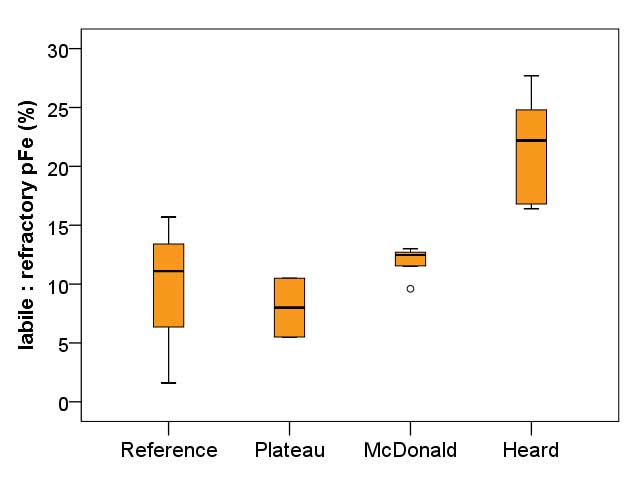Glacial erosion processes suspected to enhance the lability of particulate iron, with a strong influence on the biological demand in the subantarctic waters
As part of the GEOTRACES process study HEOBI (GIpr05) van der Merwe and co-workers (2019, see reference below) conducted a thorough characterization of the labile and refractory iron phases of the particles discharged to the local seawater by the glacial erosion and rivers of Heard and Mc Donald islands (Southern Indian Ocean). They demonstrate that, together with their specific lithology, the fraction of labile iron is significantly larger for particles that experienced glacial weathering processes than for particles of submarine hydrothermal origin. Moreover, they estimate that this labile particulate iron supplied from Heard and to a lesser extent, McDonald Island, is likely the missing iron required meeting biological demand over the plateau, downstream of the islands where traditionally an intense seasonal bloom develops.

Reference :
van der Merwe, P., Wuttig, K., Holmes, T., Trull, T. W., Chase, Z., Townsend, A. T., Goemann, K., Bowie, A. R. (2019). High Lability Fe Particles Sourced From Glacial Erosion Can Meet Previously Unaccounted Biological Demand: Heard Island, Southern Ocean. Frontiers in Marine Science, 6, 332. DOI: https://doi.org/10.3389/fmars.2019.00332
